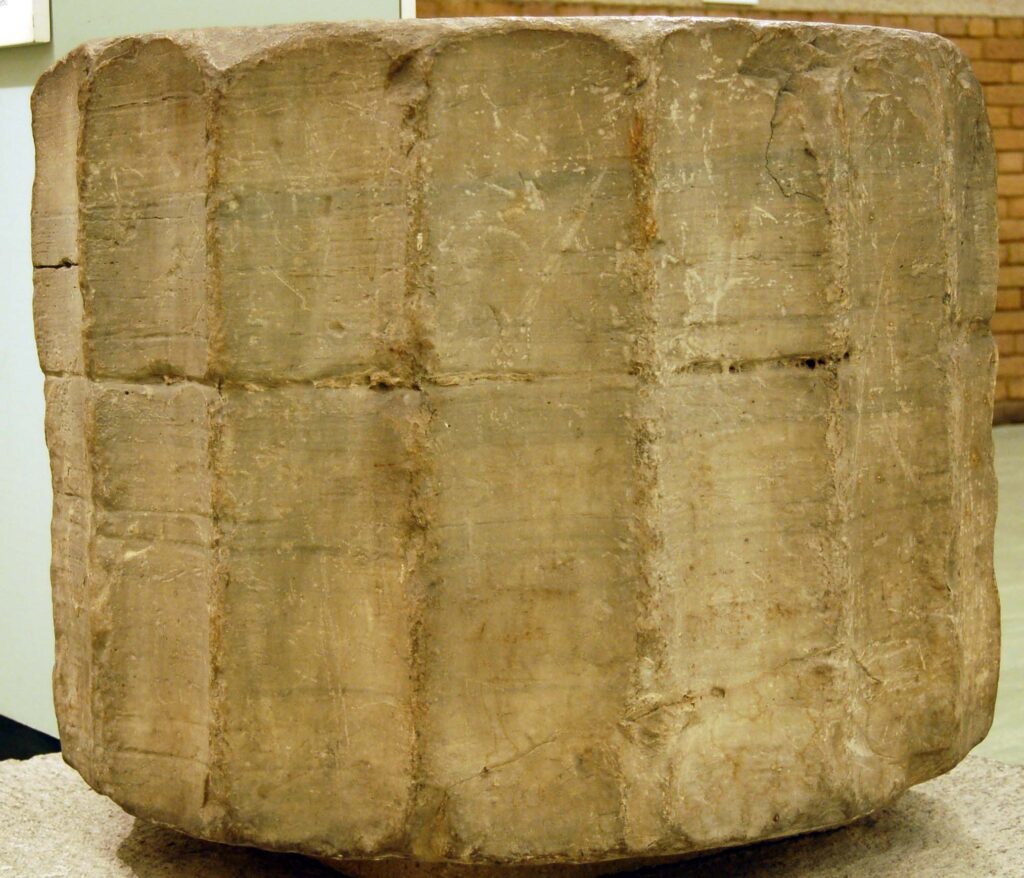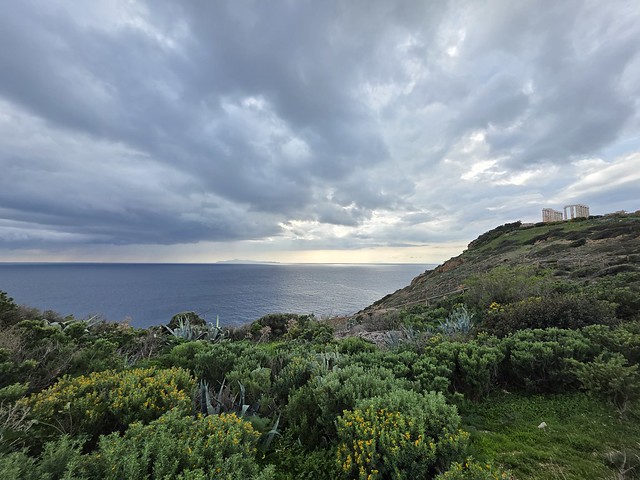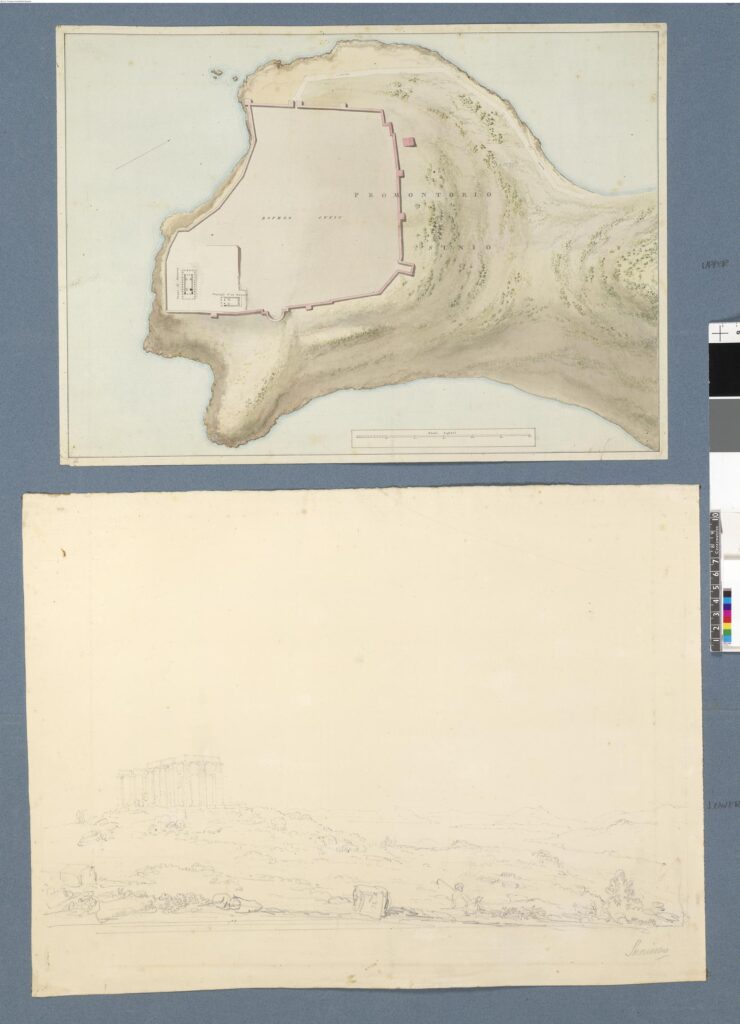Athens – Temple of Poseidon
This is what Richard identified as the Temple of Poseidon.
This is the actual one. It’s an easy mistake to make though and I didn’t say anything. The ruins are from a temple dating to around 444 to 440 BC, replacing an early temple that the Persians had constructed in 480 BC that was sort of knocked down during the Persian Wars. It was an important religious site as sailors used it to seek Poseidon’s favour for safe voyages and it was also more practically used as a visible landmark for shipping. I’m no expert in Greek architecture, nor indeed an expert in any architecture, but apparently it’s built in the Doric style which was similar to the Euston Arch before they pulled it down. They used local white marble to construct the temple, using the stone from the nearby Laureotic Mount.
There were quite a lot of people around when we arrived in the late morning, but the site itself was closed off due to the national strike. It’s located around a one hour drive from Athens although there are some coach services which operate out there.
And as it was closed, that meant this was the closest that we got to the temple. I had been hoping to see the graffiti made by Lord Byron who visited here and decided to carve his name into one of the pillars in the early nineteenth century. It is moderately odd (although entirely correct) that this is an interesting thing to look at when it’s historic graffiti, but rather less approved of when it’s modern day graffiti. In 1825, two of the columns collapsed and the bits have ended up in Venice and London. I mean, it survives for thousands of years and then some bits fall off just at that moment, but I’m not making any allegations.

Here’s the bit of the column that is in the British Museum.
This is the drawing commissioned by Lord Elgin of the site, drawn by Sebastiano Ittar in 1802.
As some things in the local area were re-opening in the afternoon, we came back later in the day to see if they had opened the site up, but unfortunately not. The views were well worth stopping for though and the cafe had opened up, to serve coffee and light snacks to the disappointed visitors who had come to experience history. It was unfortunate that we couldn’t get closer to the temple, but it was still an impressive thing to see perched on the edge of the clifftop.






